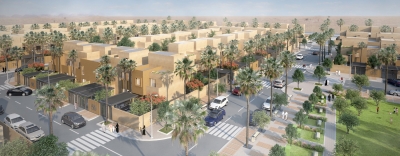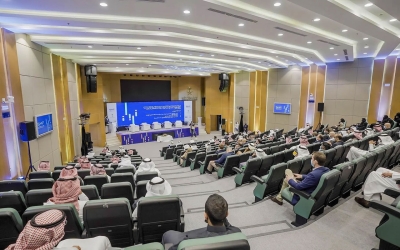
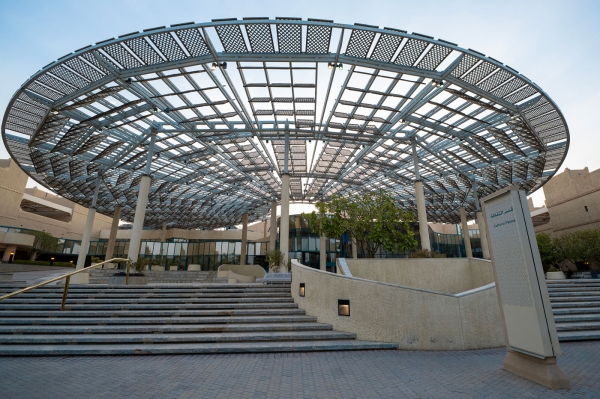
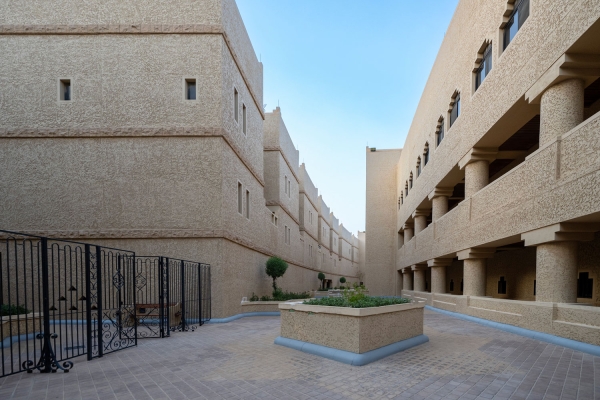
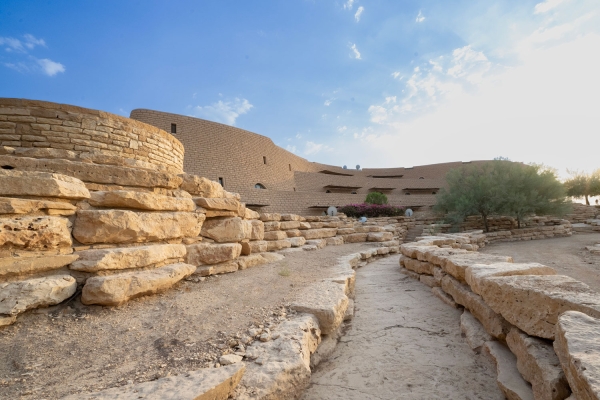
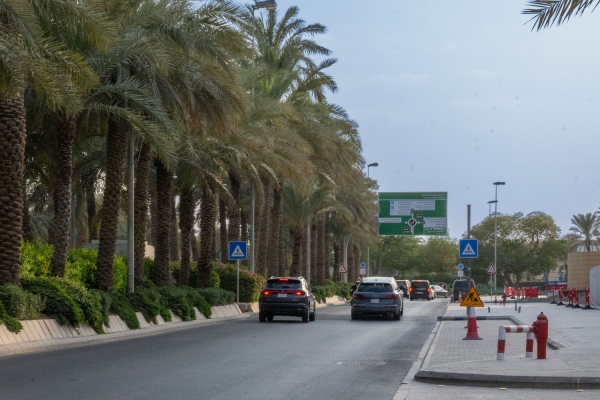
The Diplomatic Quarter Development Program is a construction and development plan for the Diplomatic Quarter in the northwest of Riyadh City, the capital of the Kingdom of Saudi Arabia. After its implementation, the quarter became a model city with an integrated and advanced lifestyle.
The Diplomatic Quarter, also known as al-Safarat District, spans an area of eight km². Its basic facilities were completed in 1982 at a cost of approximately SAR706 million. The development was executed by the High Commission for the Development of Riyadh (now the Royal Commission for Riyadh City - RCRC), as part of its projects to develop Riyadh's neighborhoods in urban, social, economic, and cultural terms.
Master plan for the Diplomatic Quarter Development Program
The comprehensive plan for the Diplomatic Quarter was based on creating two main roads: one connecting to Salbukh Road on the east side and the other to Hejaz Road running parallel on the south side. These roads connect to a mixed-use central area, stretching through the quarter in a curved line of 175 m wide. This area includes commercial facilities and five residential zones, along with public services such as: mosques, social centers, educational and cultural facilities, and a mini civil community with a library, fire station, and medical center, all interconnected with gardens and pedestrian pathways.
An executive committee chaired by the then Governor of Riyadh Province participated in the plan to establish basic facilities, services, buildings, and public spaces such as parks and streets in the quarter, with participation from the private sector. The private sector developed residential facilities, commercial centers, and some services, in consultation with the list of diplomatic missions and regional organizations to clarify their needs for their premises and facilities. Before the implementation of the quarter's infrastructure and basic facilities, regulations, and development standards submitted by the private sector were prepared.
Facilities of the Diplomatic Quarter project
The facilities of the Diplomatic Quarter Program were placed to maintain a specific architectural character for the area, with the following proportions:
- Gardens, public spaces, and parks: 30.9 percent, with sixteen parks and gardens encircling and distributed within the Diplomatic Quarter.
- Residential areas: 22.2 percent, covered by a 480 km long electricity network.
- Embassy buildings and residences for international diplomatic representatives: fourteen percent, some of which were designed to reflect each country's culture, with architecture playing a diplomatic role.
- Public services: 10.6 percent, including a sixty km long stormwater drainage network.
- Commercial areas: 5.7 percent.
- Roads and streets: 16.6 percent of the area.
The quarter was also equipped with a 36.1 km long irrigation water network, a 1,500 m³ irrigation water tower, a 14,000 m³ underground water tank, a seventy km long drinking water network, a five thousand m³ drinking water tower, an underground drinking water tank with a capacity of 1,500 m³, and a fifty-five km long sewage network. Additionally, it includes a sewage treatment plant with a production capacity of 12,000 m³ per day and an automated irrigation network control system to regulate the distribution of irrigation water to landscaped areas according to their needs.
Origin of the Diplomatic Quarter
The Council of Ministers decided to relocate the headquarters of the Ministry of Foreign Affairs and diplomatic missions from Jeddah City to the capital, Riyadh in 1975. In light of this decision, the High Commission for the Development of Riyadh (then) began implementing the basic facilities of the Diplomatic Quarter in 1979 on a fifty km long road network.
The plans of the Diplomatic Quarter Development Program were mapped in a balanced manner regarding basic facilities and public services, ensuring the integration of services and facilities within the use of plots distributed in the quarter. This aimed to prevent the tendency of some diplomatic entities to become self-sufficient, ensuring the Diplomatic Quarter performs its functions comprehensively.
The Diplomatic Quarter can accommodate 22,000 people and was designed to host 120 diplomatic missions. On January 26, 2021, the Council of Ministers issued its decision to dissolve the (Diplomatic Quarter Authority) along with all the authority's organizational arrangements and transfer all its tasks, projects, rights, liabilities, and staff to the RCRC. The decision also included transferring the assets, properties, works, functions, contracts, appropriations, budget items, and allocated funds of the Diplomatic Quarter Authority to RCRC.
Related quizzes
Related articles
